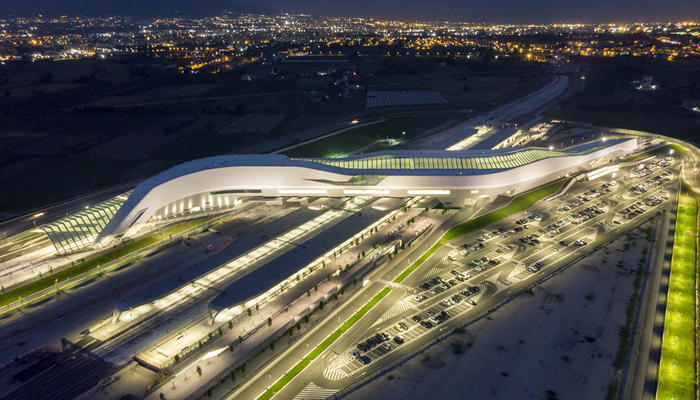

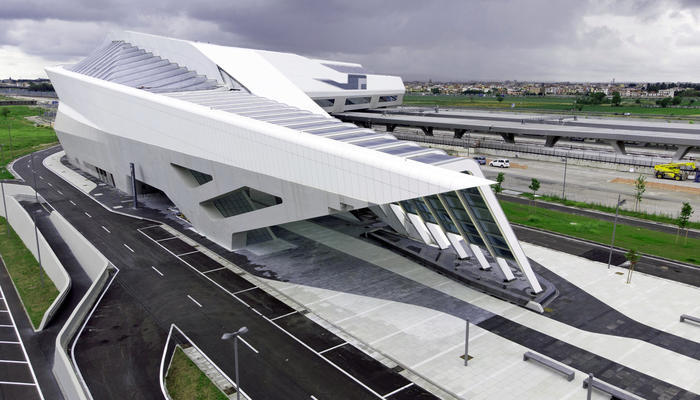
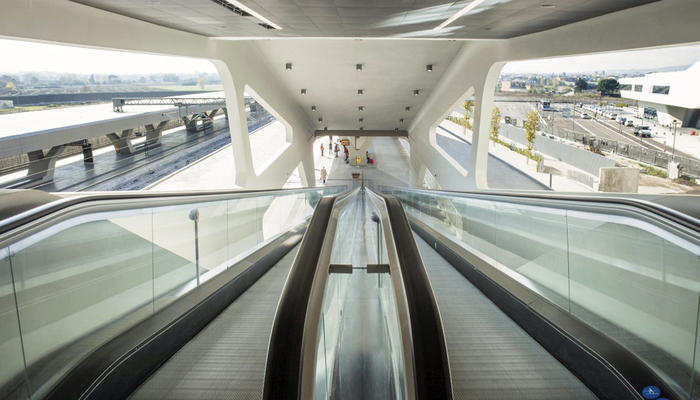
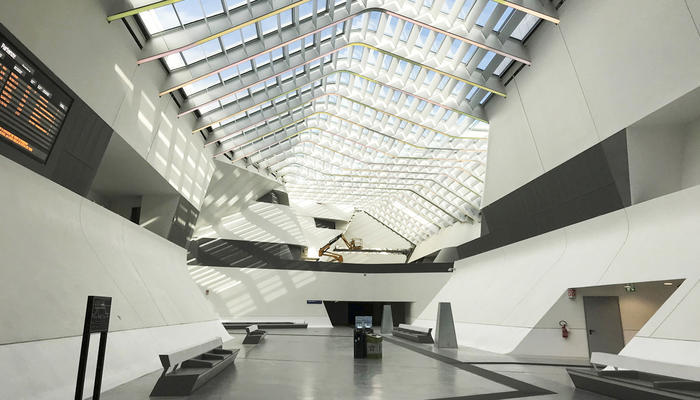
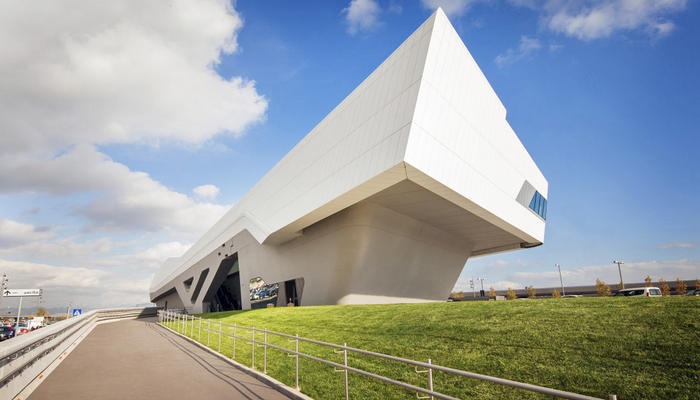
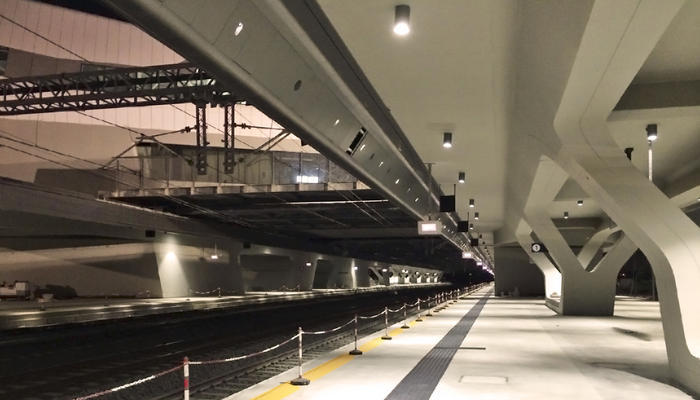
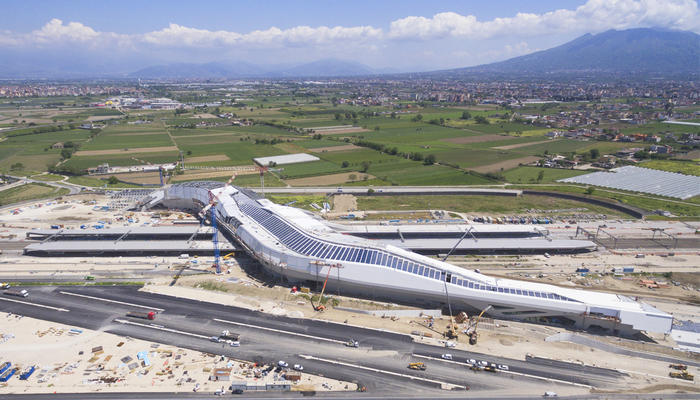
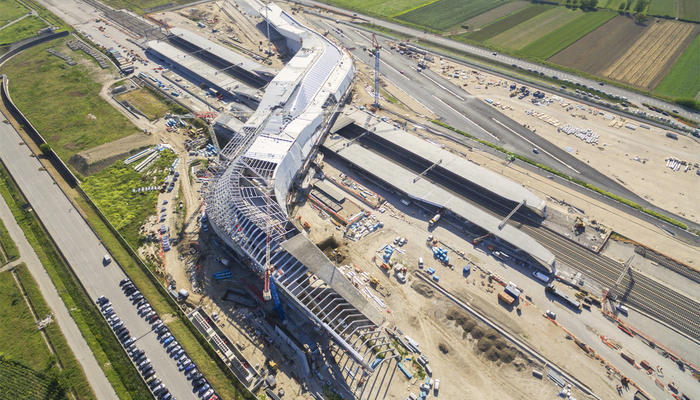
Project Highlights
| Sector | railways and subways | |
| Country | Italy | |
| Location | Afragola (Naples) | |
| Type of Contract | E.P.C. | |
| Contract value | EUR 61 mln | |
| Customer | Italferr S.p.A. | |
| Contractor | JV Astaldi–NBI (Astaldi Group) | |
| Progress | completed | |
| Construction | from 2015 |
Description
The contract calls for carrying out the works to complete the passenger building, including all station and railway systems.
Designed by the architect Zaha Hadid, the new station is marked by its curved shapes, which influenced both the choice of materials (steel, glass, Corian®), and the construction procedures: of the
Energy savings is one of the criteria that guided the design and building of the station systems: the lighting system (interior and exterior) is marked by programmed light control, and is largely done with LED lamps to contain consumption (more than 2,000 lamps,
Astaldi succeeded in the project in 2015, rising to the challenge to complete a project marked by high construction complexity. This challenge was met by completing the first phase of activity in only two years, without ever interfering with the daily operation of the Rome-Naples high-speed line, as the customer demanded. Thanks to the completion of a first phase of works, the station has been in service since 11 June 2017.